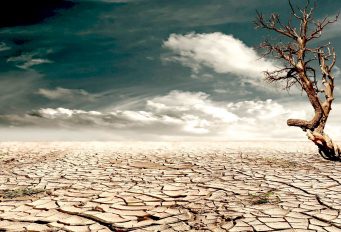![]() 4 minute read
4 minute read
Temperatures in cities are breaking the records – heat in Phoenix reached 44 degrees Celsius in 2018. Countries around the world invest in vegetation and cool roofs to deal with heat island effect and climate change. Consumer interest in “cold” spaces and North shift of wine plantations are only some modifications triggered by high temperatures. So, what is the future image of the global marketplace with greater thermometer indicators?
Vegetation combating the heat
Abnormally high temperatures are triggered by a growing urban population. According to the Population Reference Bureau, now 50% of the global population lives in metropolitan areas. Inhabitation of cities is forecasted to attain 60%, 5 billion people, in 2030. Authorities react with escalating investment in construction to provide living opportunities for all. This enormous urbanization trend derives unwanted consequences worldwide such as the heat island effect.
Accelerating temperature rise in metropolitan areas is a devastating eco-issue. In the USA solely, 1000 people die per annum due to abnormal temperatures. Also, heat island effect creates additional energy demand for conditioning and requires the authorities to reconsider current electricity grids. Massive metropolitan areas like Phoenix, Louisville, Chicago, and Los Angeles combat extreme heat by planting trees and having green and cool roofs. Vegetation is becoming a leading warrior against heat. Chicago remains a national leader with more than 500,000 planted trees and the largest rooftop park worldwide. Tree shades make building cooling 25% more effective per year whereas vegetation also minimizes air pollution and remains a natural air conditioner.
April Mendez, a co-founder of Fresh Coast Capital, sees the benefits of “urban green spaces” as a new investment trend. This is a novel profit-generation tool to “accelerate cutting-edge green infrastructure” for the better quality of living and healthier community. Businesses are already making 10 times more money from planting trees. With these positive dynamics, investment in vegetation will be even more attractive in the recent future.
Heatwave modifies
consumer behavior
Rapidly rising temperatures require consumers to take advantage of services and products that they did not actively use before. In South Korea, ordering meals online and spending time in conditioned shopping centers are in high demand during peak temperatures in the summer. In Germany, more and more people attend museums to cool down and enjoy masterpieces simultaneously. The heatwave craze and subsequent changes in consumer behavior require businesses be creative to comply with arising “cooling” demands. For example, a supermarket in Hesse offered its customers a 2-minute visit to the cold-storage room for €3 only during the hottest summer months in 2018. This “won’t make me rich, but a serious offer” claims Lars Koch, a supermarket manager from Freidberg. With temperatures on the constant rise, a novel “cooling” market niche unveils a potential for additional revenue growth and market diversification.
Draught for one –
an opportunity for another
Heatwave does not leave the agricultural segment behind. In the United States, growing grapes becomes questionable in the counties such as Napa and Santa Barbara due to rising temperatures. In 2050, heat will also make it impossible to vineyards in Italy, Australia, South Africa, and France. Already in 2018, hot weather caused harvest loss in the UK and led to struggles among farmers. Thus, simultaneously with sundown of well-known wineries, drastic climate change reveal new market players to the wine industry. United Nations suggests that lands suitable for wine growing will move up to 180 kilometers North. Whereas countries like England, Sweden, and Finland will be the most suitable areas for vineyards. Similar changes might incur in other fruit-growing segments giving Nordics an opportunity for “exotic” farming. Draught will restructure the global market completely. Heatwave now takes the lead and ought to change the rules of the global agricultural game.
Kick-off to the energy segment
Drastic changes in temperatures also have an adverse effect on the stability and efficiency of energy plants. In Australia, roof solar energy is already used as an alternative source. By 2027, more than 40% of customers are expected to use home solar stations – by 2050 their number will surpass 65%. Decentralized sun-source energy will dominate in the upcoming future. In response to the change in demand, service providers would be required to purchase new grid support and increase the market value to $2.5 billion per annum.
Heatwave leaves nuclear power in the past and makes a smooth transition to the era of solar energy. In June 2018, high temperatures enabled to generate 533-gigawatt hours from sun solely. With these records, according to the International Renewable Energy Agency, the solar photovoltaic system will increase the market share to 13% in 2030. Cost-reduction by almost 60% makes solar energy the future of the power generation initiatives and a new compelling sector of the world economy. Already by 2020, the global solar energy market is projected to reach the value of $422 billion.




